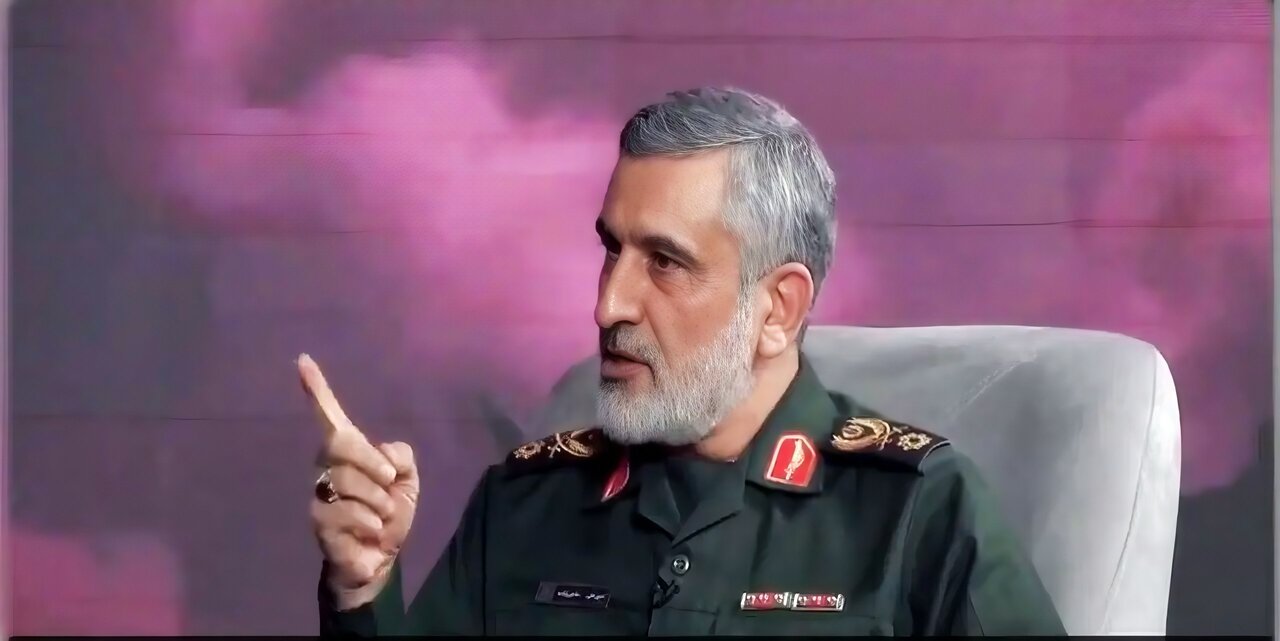IRGC: 'Inferno' to ensue any nuclear site strikes as Israeli media rolls out alleged assault plans

TEHRAN – Brigadier General Amir Ali Hajizadeh, commander of the Islamic Revolution Guard Corps (IRGC) Aerospace Division, warned that a devastating response would follow any strikes on Iranian nuclear sites, regardless of their success.
"If the Americans and Zionists try to strike our nuclear centers, the fire we ignite in the region will be of unquantifiable scale and scope,” he said during an interview aired on Tuesday.
Recently, Western news outlets, notably The Washington Post, highlighted alleged U.S.-backed Israeli plans to target Iran’s nuclear sites “in the first half of 2025.”
This development aligns with recent threats of military action against Iran from key U.S. and Israeli figures, including President Donald Trump, National Security Advisor Mike Waltz, and Prime Minister Benjamin Netanyahu.
Trump issued numerous inflammatory statements regarding the possibility of “obliterating” and “bombing the hell out of Iran.”
Waltz reiterated the overused and aggressive mantra frequently employed by U.S. officials in various administrations: “All options are on the table,” while the convicted war criminal Netanyahu crowed about "finishing the job" against Iran.
Hajizadeh, who oversees Iran's advanced missile and drone programs, dismissed such threats as "psychological warfare."
“What our enemies are really seeking is psychological intimidation, not war,” he stated.
The general warned that the country possesses "sufficient regional targets" for low-cost missile strikes, mocking adversaries: "If we deploy 500 or 1,000 drones instead of 150, what could they possibly do?"
"War won’t occur because our enemies know the folly’s price," Hajizadeh asserted.
Operational readiness and True Promise III
Hajizadeh confirmed that Operation True Promise III — Iran’s pending third direct retaliatory strike against the Israeli regime — will materialize.
This follows True Promise I on April 2024, launched in response to Israel’s bombing of Iran’s consulate in Damascus, and True Promise II on October 2024, which targeted Israeli military bases after the assassinations of Hamas chief Ismail Haniyeh, Hezbollah leader Hassan Nasrallah, and IRGC General Abbas Nilforoushan.
These operations, which surprised many analysts, demonstrated Iran’s strategic resolve and ability to defend its interests in the region.
"The Zionists miscalculated, assuming Iran would avoid direct confrontation," Hajizadeh stated, referencing Tel Aviv’s April 2024 attack.
"Our operations are based on consensus and red lines they failed to recognize," the commander added.
He highlighted that 75% of missiles in True Promise II struck targets, overwhelming Israel’s defense systems and exposing their "collapsing radar networks" as panic-induced interceptor missiles misfired.
Strategic shifts and regional fallout
The senior commander linked recent developments in West Asia to Operation Al-Aqsa Storm, Hamas’ October 2023 offensive, which he described as a "strategic, irreparable defeat for Israel."
Hajizadeh stressed that despite the sacrifices of numerous martyrs since then, the operation "awakened global solidarity with Palestine" and hastened the "collapse of the Zionist regime’s legitimacy."
He further noted that U.S. warships in the Mediterranean and the Red Sea — deployed for "anti-ballistic defense" after October 2023 — failed to counter Iran’s missile salvos, underscoring Tehran’s "unmatched defensive capabilities"
Regional radar networks, he added, coordinated with U.S.-Israeli forces but proved ineffective against Iran’s operations.
According to the IRGC, at least ten countries assisted the Israeli regime during Iran's Operation True Promise I.
The U.S. played a central role by coordinating multinational air defense efforts from Qatar’s Al Udeid Air Base.
The United Kingdom deployed fighter jets, attempting to shoot down Iranian drones over Iraqi and Syrian airspace, working in close coordination with U.S. forces.
Meanwhile, France tried to intercept missiles and drones, deploying naval assets for radar coverage and responding to Jordan’s request for airspace defense.
Jordan, which hosted the United States Central Command (CENTCOM) General Michael E. Kurilla, actively tried to intercept Iranian projectiles passing through its airspace.
Military advancements and defense innovations
Hajizadeh detailed Iran’s evolution from a "second-hand arms importer" to a global exporter of advanced defense systems, including the domestically designed "358" defensive drone.
"Capable of covering 120 km with engine propulsion, this system has apparently inspired foreign replication," the commander noted.
He also said Iran’s ballistic missile range now extends to 2,000 km, with no technical barriers to further increases.
"If we unveil a new missile city weekly, it would take two years to exhaust our arsenal," Hajizadeh boasted, referencing the country’s strategically situated and concealed underground missile and drone facilities all over the country.
He also revealed ongoing development of anti-ballistic defense systems, slated for deployment in Tehran and major cities by 2026.
While reaffirming military preparedness, Hajizadeh urged a domestic focus on economic resilience: "Our main challenges lie here, not in war. We must mobilize to strengthen this front."
Leave a Comment